Accurate lead-to-account matching cuts the time needed from lead generation to account development.
Automation is key. It creates connections that reduce the risks of manual data entry mistakes.
Strong algorithms use company names, email addresses, and locations. This ensures the right reps reach the right potential customers.
The outcome is better customer satisfaction and engagement. Timely interactions enhance the sales experience.
To make lead-to-account matching work, organizations must focus on data quality and integrity.
Research shows that 70% of companies face data mismanagement. This leads to inefficiencies in sales.
Data quality metrics—completeness, freshness, consistency—verify that matching algorithms produce accurate outcomes.
Businesses should use tools to improve existing data. They must keep their systems accurate and up-to-date to stay competitive.
Also read: 7 best free presentation software
The Importance of Lead-to-Account Matching in 2025

Lead-to-account matching connects leads to their accounts in a CRM system. It streamlines sales. It makes sales teams work better. Potential customers are followed by the right representatives.
Good matching reduces the time from lead generation to account development. Automation is common. Teams seek to remove manual errors. When leads match accounts, businesses create better engagement strategies. Conversion rates improve. Customer satisfaction grows. Revenue rises.
Defining Lead-to-Account Matching
Lead-to-account matching pairs new leads with existing accounts in a database or CRM. This requires analyzing data points—company name, address, industry—to confirm a lead belongs to an account.
-
Attributes Used in Matching:
- Company Name: The main identifier.
- Email Addresses: Show leads to accounts.
- Phone Numbers: Crucial for verification.
- Location: Helps connect leads to accounts.
-
Benefits of Accurate Matching:
- Efficiency: Less time on data entry.
- Precision: Fewer lead management errors.
- Enhanced Strategies: Tailored marketing from understanding engagement.
The Role of Data in Effective Matching
Data quality is key. Organizations must keep their data accurate, complete, and current. Poor data causes inefficiencies.
-
Data Quality Metrics:
- Completeness: No critical data is missing.
- Freshness: Regular updates keep data relevant.
- Consistency: Standard formats avoid confusion.
-
Data Enrichment Tools: Tools like ZoomInfo and D&B Connect fill gaps with relevant information.
Industry Trends Shaping Lead Management
-
Increased Use of AI: Machine learning improves matching accuracy.
-
Focus on Account-Based Marketing ABM: Marketing aligns with account insight for better engagement.
-
Real-Time Data Processing: Companies invest in systems for immediate data updates.
Also read: 7 beste gratis foto editors
Key Features to Look for in Lead-to-Account Matching Software
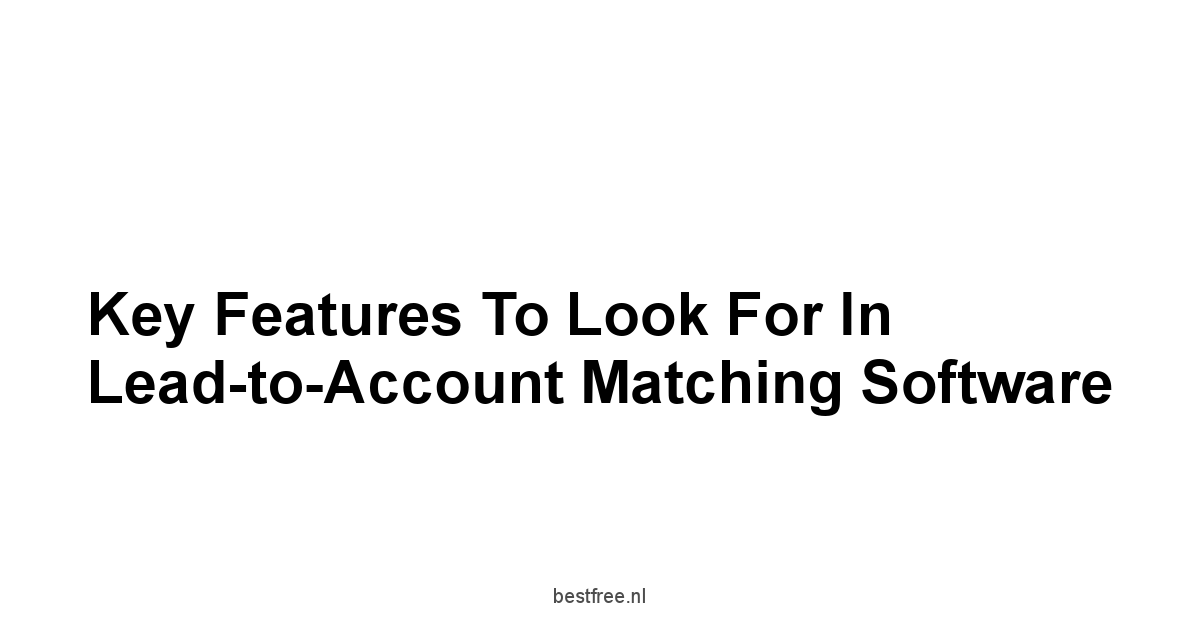
When choosing lead-to-account matching software, organizations must weigh features that improve how it works and how effective it is.
These features determine how well the software fits into current workflows and how it boosts sales performance.
Automation Capabilities
Automation is crucial for effective lead management.
By automating the lead-to-account matching process, sales teams can lessen their manual load, freeing them to sell instead of handle paperwork.
- Benefits of Automation:
- Removes manual entry, cutting down on errors.
- Speeds up data processing and routing.
- Ensures consistent follow-up on leads.
Integration with Existing Tools
Seamless integration is essential for any software solution.
The right lead-to-account matching tool must integrate smoothly with current CRM and marketing automation platforms like Salesforce, HubSpot, and Marketo.
- Integration Benefits:
- Unified Data Access: Guarantees all team members receive the same data from all platforms.
- Improved Collaboration: Marketing and sales can collaborate more effectively when systems share data.
Data Quality and Accuracy Measures
Choose software that has measures to uphold high data quality.
- Key Measures:
- Deduplication: Automatic removal of duplicate records keeps data clean.
- Validation: Real-time checks ensure data accuracy.
Customization and Flexibility in Routing
Every business operates in its own way, thus the lead-to-account matching software should allow for customizable routing options.
Companies need the freedom to set rules based on industry, account size, or geographic area.
- Routing Criteria:
- Geographical Territories: Assign leads to sales reps depending on their locations.
- Account Ownership Rules: Ensure leads are directed according to designated account owners.
Also read: best free mlops platforms in 2025 2
Assessing the Best Free Lead-to-Account Matching Software
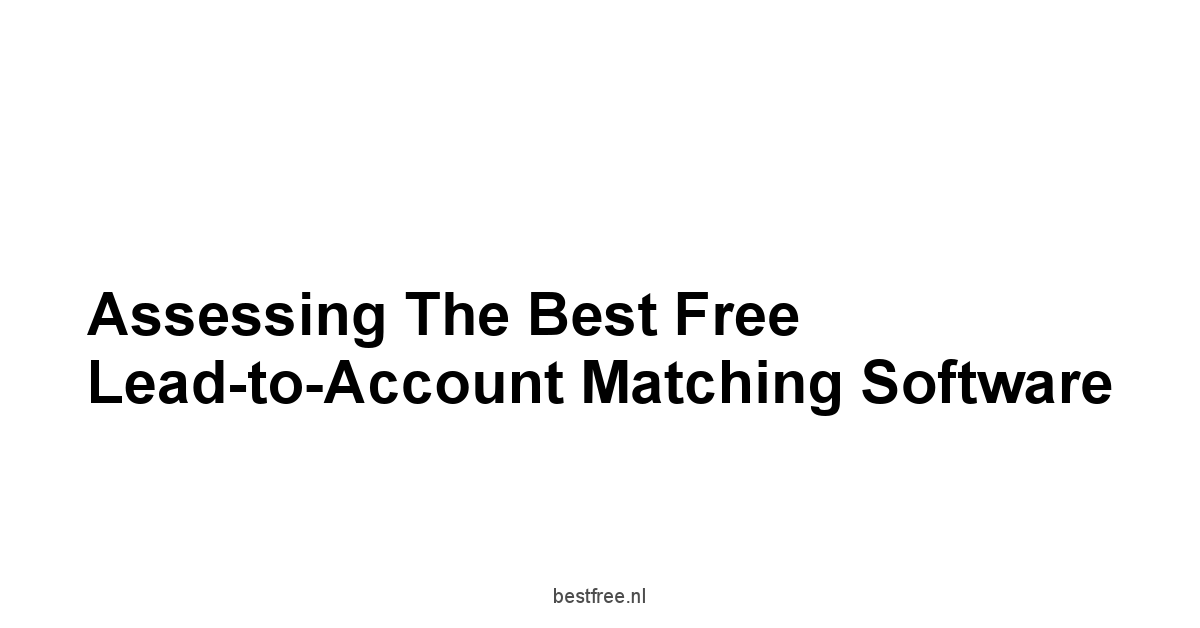
Finding the right free software can make operations easier without heavy expenses.
Evaluating software by clear criteria can reveal which one suits an organization’s needs best.
Criteria for Evaluation
When searching for lead-to-account matching software, consider these:
- Scalability: Will the software expand with your business?
- User Feedback: Seek reviews from users to assess reliability.
- Cost vs. Features: Ensure the features match any added costs, if there are any.
User Experience and Interface
A simple interface is crucial.
The simpler it is, the more likely your team will embrace the software.
- Key Elements:
- Dashboard Usability: Clear paths enhance the user’s journey.
- Customization: Allows members to adjust views as needed.
Support and Community Surrounding the Software
Good user support and a vibrant community improve usability.
Choose software that offers solid documentation, tutorials, and swift customer support.
- Community Engagement: Look into forums and user groups for shared experiences and advice.
- Help Resources: Access to skilled support eases the onboarding process.
Also read: best free ai governance tools in 2025
Future Outlook on Lead-to-Account Routing Techniques
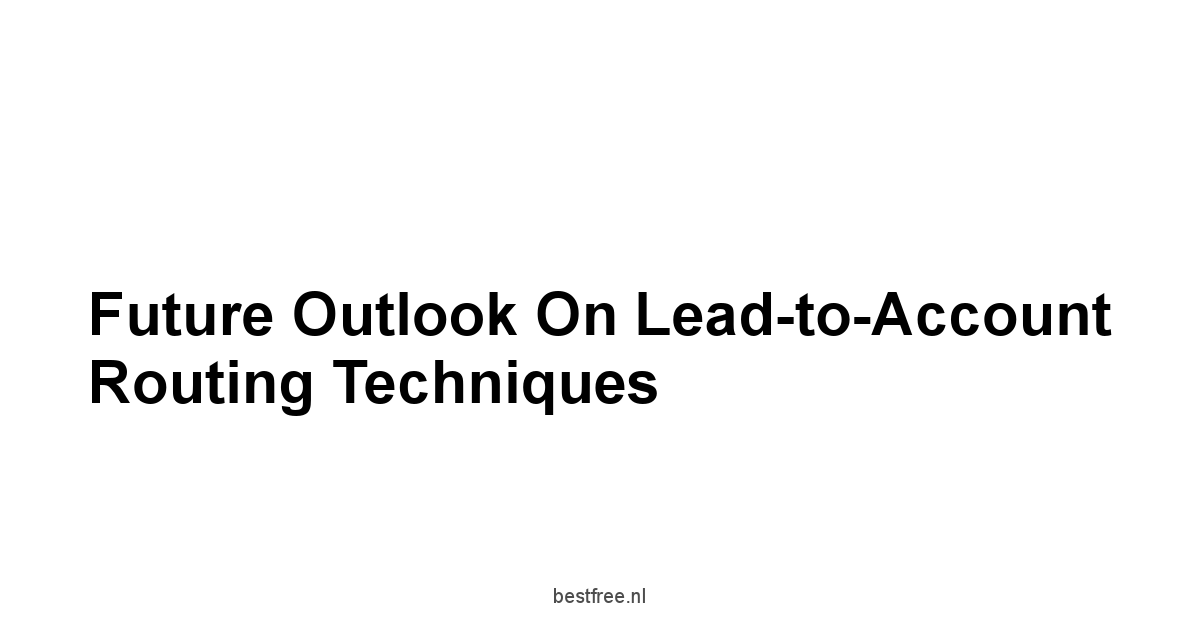
The road ahead is clear. Lead-to-account matching and routing will evolve.
These changes will push for greater efficiency and drive sales success.
Innovations in Automation
As technology advances, we can expect progress in automation tools:
-
Robotic Process Automation RPA: RPA tools will take care of repetitive tasks in lead management with greater ease.
-
Customizable Automated Workflows: Companies will craft workflows that align with their unique needs.
The Role of Artificial Intelligence
AI will carve a new path in lead-to-account matching, enhancing prediction and classification.
-
Predictive Lead Scoring: AI will sift through data, identifying leads with buying intent, sharpening focus on prime prospects.
-
Natural Language Processing: AI tools will analyze customer interactions, making routing more efficient.
Predictions for Market Evolution
Market currents suggest a rise in integrated solutions.
Firms will seek platforms that meld lead-to-account matching with wider marketing abilities.
-
Increased Reliance on Data-Driven Decisions: As data flows multiply, businesses will lean on sharp analytics for their strategies.
-
Collaboration between Sales and Marketing: Organizations will work to unite their sales and marketing aims to boost lead conversion.
Also read: best microsoft consulting services in 2025
Top Free Lead-to-Account Matching Software Options in 2025
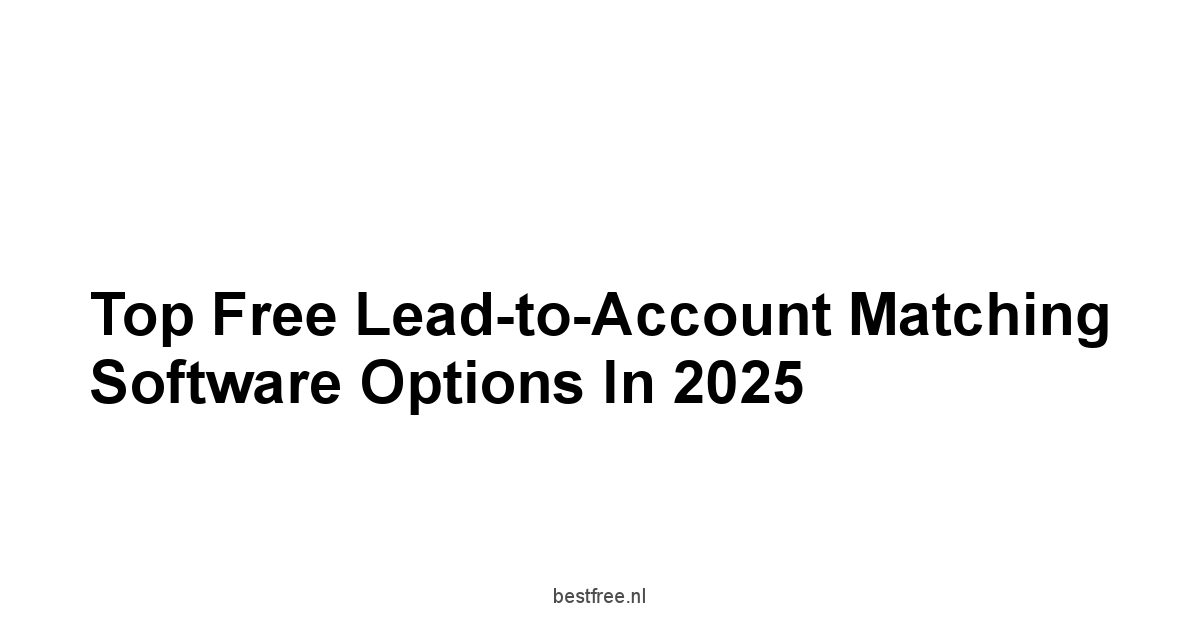
Several free lead-to-account matching software options will likely lead the market in 2025.
Overview of Leading Tools
- ZoomInfo: Known for its vast database and sharp matching algorithms.
- Chili Piper: Stands out with its efficient lead routing and scheduling skills.
- LeanData: Recognized for its clear data management.
Unique Selling Points of Each Software
- ZoomInfo: Delivers broad integration options and live data processing.
- Chili Piper: Removes the back-and-forth in scheduling for sales teams.
- LeanData: Offers efficient workflows for account-based marketing.
User Feedback and Ratings
- ZoomInfo: Lauded for its data accuracy; a user rating of 4.5 out of 5 for functionality.
- Chili Piper: Scores 4.6 out of 5 for its ease of use and support.
- LeanData: Maintains a strong 4.3 out of 5 for customization and deep insights.
Also read: 6 best free data backup software
Implementing Lead-to-Account Matching Solutions
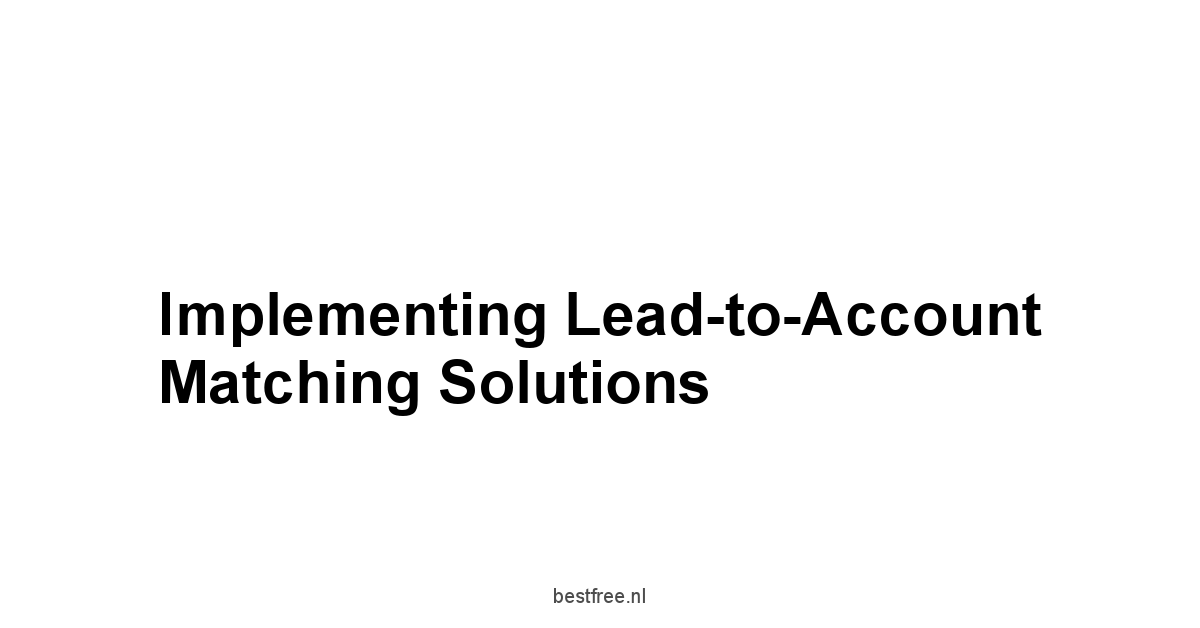
To adopt lead-to-account matching solutions, plan wisely. Do it for the best results.
Best Practices for Integration
- Gradual Roll-Out: Introduce the software slowly. Let teams adjust to the changes.
- Cross-Department Collaboration: Involve sales and marketing teams from the start. It brings broader support.
Training Teams for Success
Training is essential.
Provide sessions on how to use the lead-to-account matching software and its advantages.
-
Interactive Learning: Offer guided sessions, video tutorials, and hands-on practice to enhance understanding.
-
Follow-Up Training: Plan regular refresher courses to keep the teams engaged.
Measuring Impact and Success Rates
To assess the value of lead-to-account matching, gather and examine the relevant data.
- Key Performance Indicators:
- Lead-to-Conversion Rates: Track how many leads turned into customers.
- Time Taken to Close Deals: Look at changes in the sales cycle after implementation.
Also read: 7 beste gratis online winkelplatformen
Challenges in Lead-to-Account Matching and Routing
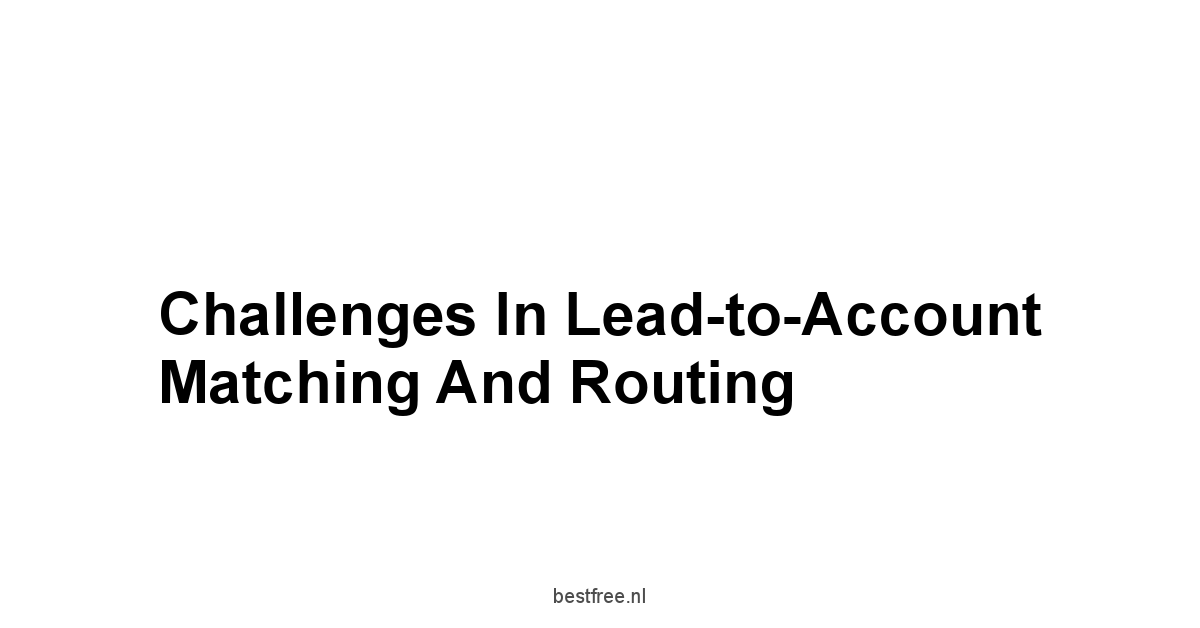
Lead-to-account matching software has advantages. But it brings challenges too.
Common Obstacles Companies Face
- Data Silos: Separate data can block effective lead matching.
- Legacy Systems: Old systems often resist new software.
Data Privacy Concerns
With strict data regulations, companies must comply while handling customer information.
- Key Considerations:
- Transparency in Data Collection: Tell customers how their data are used.
- Robust Security Protocols: Use strong security to safeguard sensitive data.
Mitigating Routing Errors and Issues
Errors in lead routing can lead to lost chances.
Keep monitoring to find and fix mistakes quickly.
- Error Reduction Strategies:
- Regular Audits: Review routing rules and data accuracy often.
- Feedback Loops: Create a system for teams to report errors and make adjustments quickly.
Also read: 7 beste gratis bestandcompressiesoftware
Maximizing ROI with Lead-to-Account Matching Software
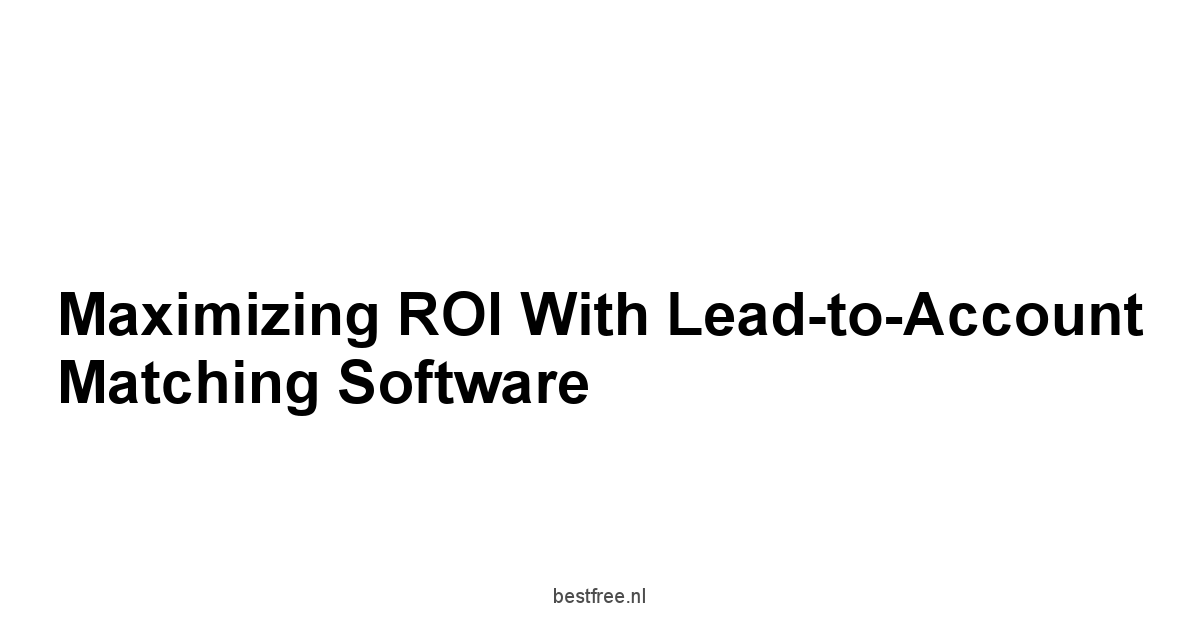
To gain the best return on investment, organizations must engage fully with lead-to-account matching software.
Strategies for Enhanced Productivity
- Automation of Routine Tasks: Reduce time on admin work by automating the tedious.
- Refined Lead Targeting: Use data to find the best prospects.
Ensuring Sustainable Growth
-
Focus on Long-Term Relationships: Build ties that bring success beyond the first sale.
-
Scalable Solutions: Select tools that can grow as your organization changes.
Aligning Sales and Marketing Efforts
Maximizing ROI is not just about software. It requires better harmony between marketing and sales.
- Regular Collaboration Meetings: Enable communication to share insights and tactics.
- Data Sharing Practices: Motivate teams to exchange data to improve lead routing and account handling.
Also read: best microsoft consulting services in 2025
What do we think?
As organizations come to see the value of connecting leads to accounts, the benefits reach beyond simple efficiency.
Companies can align their marketing more closely with sales, leading to better conversion rates and richer customer experiences.
By investing in lead-to-account matching best practices, businesses can use data-driven insights to find new paths for growth and engagement.
At the center of a good lead-to-account matching strategy is data quality.
It is noted that 70% of companies struggle with data management, which is vital for a solid matching process.
Using advanced tools for data enrichment and strict verification, organizations can keep the right information at hand.
In doing this, they lessen the risks of poor data and prepare for meaningful encounters with potential customers.
Moreover, the growing role of artificial intelligence is clear as we look forward.
AI and machine learning will sharpen matching processes, allowing quicker responses to market needs.
Predictive lead scoring will help businesses focus on leads most likely to convert.
This allows sales teams to spend their time nurturing the most promising leads, greatly increasing productivity.
As these technologies advance, they will be the backbone of sales strategies, helping organizations adapt and thrive.
In conclusion, the effects of lead-to-account matching in 2025 could be crucial for companies aiming to improve their sales.
By adopting automation, prioritizing data integrity, and harnessing artificial intelligence, companies can gain a competitive edge.
The blend of effective strategies, tech innovation, and strong cooperation between marketing and sales will foster lasting growth.
Using the right tools and methods will ensure that businesses not only hit their sales targets but also build lasting relationships with their customers, achieving success in a changing business landscape.
Also read: best accounts payable automation software in 2025
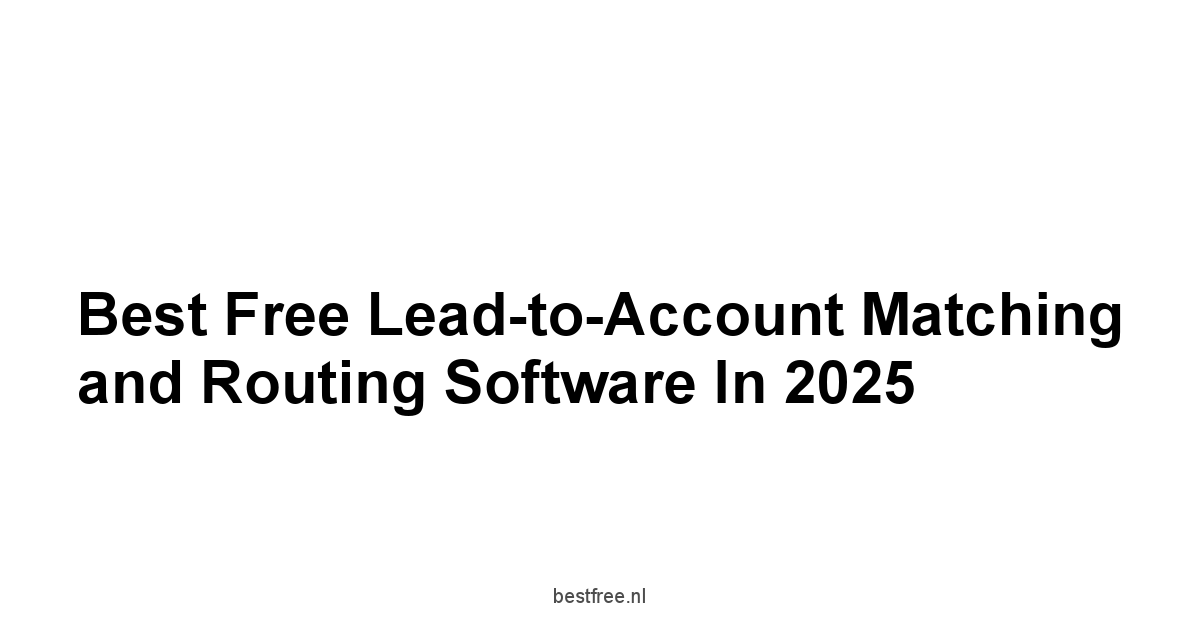




Leave a Reply